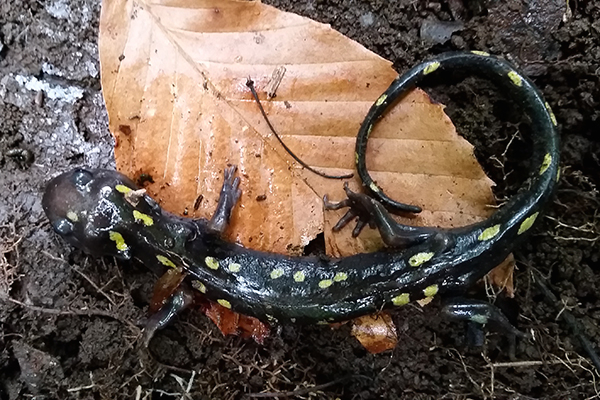While driving down the road in early spring, you may see yellow flowers and think the dandelions are back. But those flowers aren’t dandelions at all. They’re coltsfoot.
While driving down the road in early spring, you may see yellow flowers poking their heads out of the ground along the roadside. At a glance you would probably think, “Oh, the dandelions are back.” But if you pulled your car over and took a close look at those yellow flowers, you would find that there are no characteristic dandelion leaves in sight. Why is that? It’s because those early spring flowers aren’t dandelions at all. They’re coltsfoot.
Coltsfoot and dandelions look a lot alike, but they’re different plants. You can tell the difference by looking for the presence or absence of leaves at the base of the plant:

Coltsfoot

Dandelion
You can also tell the difference just based on time. Coltsfoot flowers beat the emergence of dandelions by several weeks. They’re right up there with skunk cabbage as one of the first spring wildflowers to bloom. Typically they come up in the poor soil along roadsides. You’ll know to start looking for them when you start seeing crocuses in your lawn and hearing spring peepers (a kind of frog, if you aren’t familiar with them).
Coltsfoot does have leaves. They just don’t come out while the flower is blooming. Instead they come out later, when the plant goes to seed. The leaves are dark green and shaped like a horse’s hoof print, hence the plant’s name.
The first part of coltsfoot’s scientific name is Tussilago, which in Latin literally means “to act on coughs.” Long ago coltsfoot was used as a cough remedy, but I don’t recommend it nowadays. Consuming the plant can have some nasty side effects, including liver damage. Stick to just enjoying this early spring herald as you pass it on the road.





